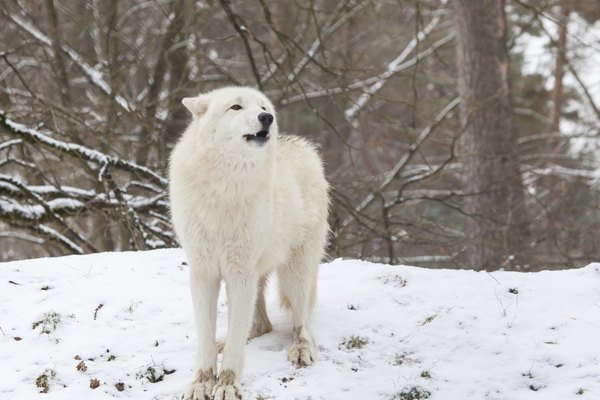
Tundra wolves have adapted to survive in some of the harshest environments on Earth. They roam great distances, hunting in packs and living off the land. But even with their impressive skills in the wild, you might wonder how often they actually come into contact with people—and what happens when they do. Here’s the thing: while they can be dangerous, it’s not quite as straightforward as you might think.
Understanding the Tundra Wolf
Tundra wolves, also known as Canis lupus arctos, are members of the larger gray wolf family. These wolves are typically larger than their southern cousins, with thick, plush fur to keep them warm in freezing temperatures. Their diet mainly consists of caribou, muskoxen, and other animals that share their icy habitats.
One fascinating feature of tundra wolves is their social behavior. They live in packs, which can range from just a few to more than ten members. This pack structure helps them hunt effectively and protect their territory from rival wolves or other predators. Think of it like a family working together to survive in a tough world—it’s all about teamwork!
Are Tundra Wolves Aggressive Toward Humans?
The short answer? Not usually. Tundra wolves generally avoid humans. They have a natural fear of people, which keeps them at a distance. Most encounters are harmless, as wolves are more interested in staying away than attacking. In fact, stories of aggressive attacks are quite rare.
However, it’s important to understand that they are still wild animals. Like any creature, they can become aggressive if they feel threatened or cornered. Imagine a time when you felt scared or trapped; you’d likely react defensively too. Wild animals often behave similarly, and it’s crucial to respect their space.
When Do Tundra Wolves Pose a Threat?
While it’s uncommon for tundra wolves to attack humans, certain situations can trigger aggressive behavior. A few factors increase the likelihood of dangerous encounters:
- Unfamiliar territory: If they feel their territory is invaded, they might defend it.
- Protection of pups: Mother wolves are especially protective and can be fierce if they sense a threat to their young.
- Food scarcity: Hungry wolves may become bolder when searching for food, potentially leading to encounters with humans.
Let me explain further: if someone were to inadvertently stumble into a den or a hunting ground, the wolves might react aggressively to defend their home or their meal. This is why it’s crucial for anyone exploring their habitats to stay aware and respectful of these boundaries.
What Should You Do If You Encounter a Tundra Wolf?
If you ever find yourself face-to-face with a tundra wolf, try to stay calm. Here are some steps you should follow:
- Don’t run: Running may trigger their instinct to chase. Stand your ground.
- Make yourself look bigger: Raise your arms or backpack to appear more threatening.
- Back away slowly: Maintain eye contact but avoid sudden movements.
You might wonder why these actions are essential. Wolves are naturally curious creatures. If you act non-threatening, they may just observe you and wander away. However, if you seem scared or aggressive, it could provoke a different reaction.
Securing Your Safety in Wolf Territory
If you’re planning to explore areas where tundra wolves roam, consider these safety tips:
- Travel in groups: There’s safety in numbers. Wolves are less likely to approach a larger group.
- Keep food secured: Store food in bear-proof containers and keep your campsite clean.
- Learn about local wildlife: Understanding animal behavior can better prepare you for encounters.
By taking these precautions, you can reduce the likelihood of an encounter and enjoy the beauty of nature without unnecessary risk.
Understanding Wolf Behavior and Communication
Wolves communicate using a variety of vocalizations and body language. Howling is their way of expressing their presence, marking territory, or calling pack members. While this can sound eerie in the stillness of the tundra, it’s more of a social behavior than a signal of aggression.
Body postures can also tell you a lot. A wolf that holds its head high and walks confidently is likely relaxed and asserting its place. Conversely, a wolf that tucks its tail and crouches may be on the defensive or feeling scared. Paying attention to these signals is crucial for interpreting their behavior.
The Importance of Conservation
Finally, let’s talk about why it matters to understand and protect tundra wolves. These animals play a critical role in their ecosystems by helping to manage populations of other species. By understanding their behavior and promoting coexistence, we help maintain balance in the delicate Arctic environment.
Conservation efforts are essential for sustaining wolf populations and their habitats. Promoting awareness about their behavior can encourage more people to appreciate and protect these remarkable animals rather than fear them.
In conclusion, while tundra wolves can be viewed as dangerous in certain situations, their overall tendency is more about avoiding conflict than seeking it. By educating ourselves and respecting their space, we can appreciate these beautiful creatures while staying safe. Enjoying nature doesn’t have to come with fear; it’s all about understanding and respect!
